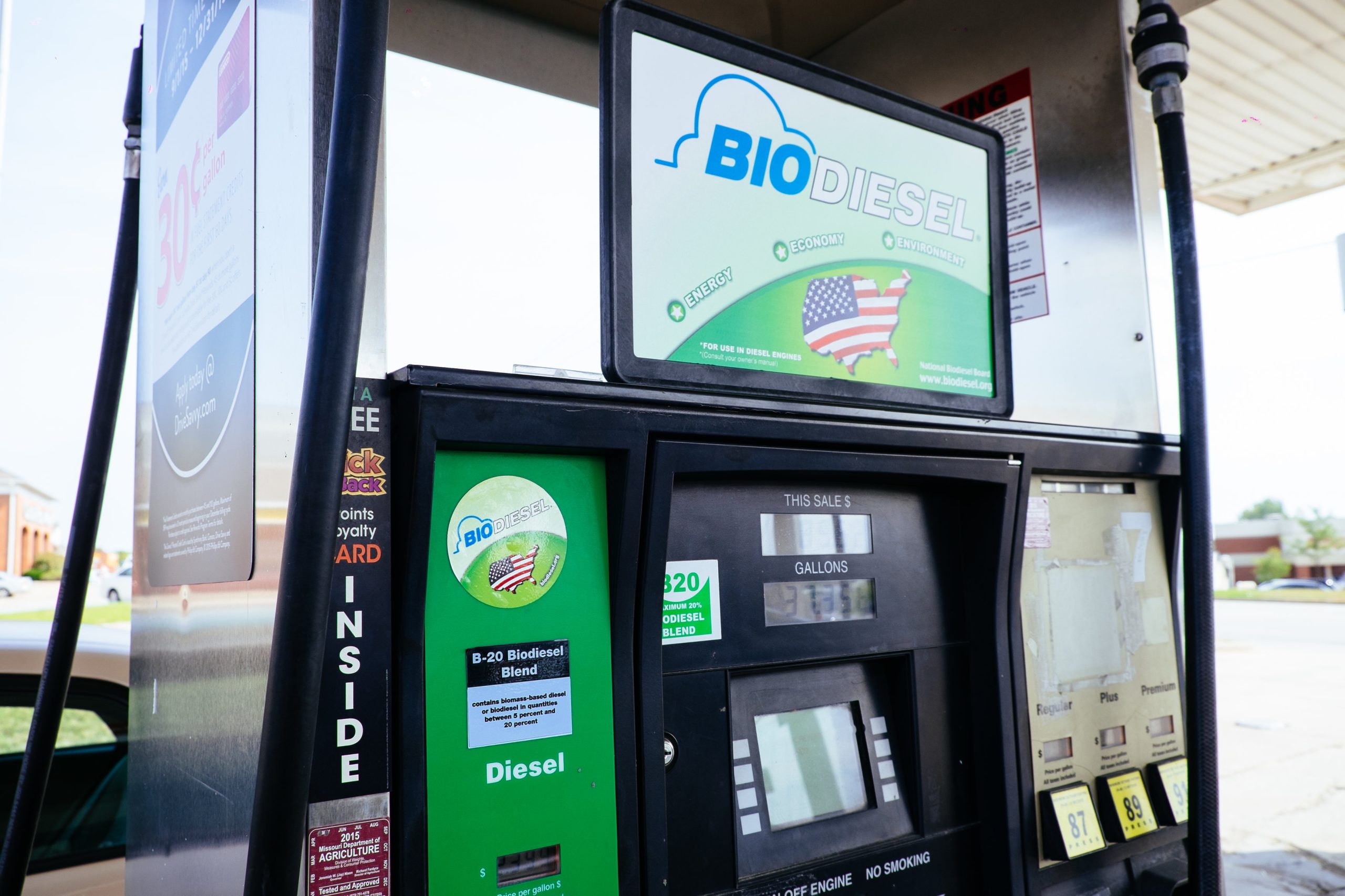Biofuels are an important market for the United States. They contribute to energy security, reduce air pollution, and support rural economic development. The Higher Blends Infrastructure Incentive Program (HBIIP) helps expand biofuel infrastructure and broadens the availability of renewable fuels such as E15, E85, B20, and B99.9. This helps American families save money at the pump while reducing carbon emissions and harmful tailpipe pollution. Higher blend biofuels also help boost the availability of skilled jobs with good wages in rural communities. Since the HBIIP’s 2020 debut, USDA has invested more than $77.8 million (and counting) in projects expected to increase biofuels sales by 1.2 billion gallons annually (and counting).
What does this program do?
The purpose of the HBIIP is to increase significantly the sales and use of higher blends of ethanol and biodiesel by expanding the infrastructure for renewable fuels derived from U.S. agricultural products.
The program is also intended to encourage a more comprehensive approach to market higher blends by sharing the costs related to building out biofuel-related infrastructure.
Who may apply?
Transportation fueling facilities including:
- Fueling stations, convenience stores, hypermarket fueling stations, fleet facilities (including rail and marine), and similar entities with capital investments;
Fuel distribution facilities, such as:
- Terminal operations, depots, and midstream partners, and similarly equivalent operations.
- Home heating oil distribution facilities
What funding is available?
Under HBIIP, approximately $90 million is made available each quarter to:
- Fueling stations, convenience stores, hypermarket fueling stations, fleet facilities, and similar entities with capital investments) for eligible implementation activities related to higher blends of fuel ethanol greater than 10 percent ethanol, such as E15 or higher, and biodiesel greater than 5 percent biodiesel, such as B20 or higher; and
- Terminal operations, depots, midstream partners, and home heating oil distributors for eligible implementation activities related to higher blends of fuel ethanol greater than 10 percent ethanol, such as E15 or higher, and biodiesel greater than 5 percent biodiesel, such as B20 or higher.
What are the terms?
Awards to successful applicants will be in the form of cost-share grants for up to 75 percent of total eligible project costs, but not to exceed $5 million, whichever is less.
What’s new?
These changes were made to help improve HBIIP:
- On a quarterly basis, make available approximately $67.5 million to transportation fueling facilities, $18 million to fuel distribution facilities, and $4.5 million to home heating oil distribution facilities.
- Home heating oil distribution facility (80% or more annual throughput volume is home heating oil)” as an applicant type.
- Increase Federal cost share for eligible activities to 75 percent for transportation fueling facilities who own 10 fueling stations or fewer and for home heating oil distribution facilities (80% or more annual throughput volume is home heating oil).
- Updated capped costs for fuel dispensers and fuel storage tanks for transportation fueling facility applicants.
How do we get started?
Click the “To Apply” tab on USDA’s HBIIP website for application instructions and other resources.
Who can answer questions?
Jeff Carpenter
(402) 437-5554
HBIIP@usda.gov
Persons with disabilities that require alternative means for communication should contact the USDA Target Center at (202)720–2600 (voice).
Why does USDA Rural Development do this?
This program helps increase American energy independence. It increases the private sector supply of renewable energy.
This program will share the costs related to the upgrading of fuel dispensers (gas and diesel pumps), related equipment, and other infrastructure required at a location to ensure the environmentally safe availability of fuel containing ethanol blends greater than 10 percent or fuel containing biodiesel blends greater than 5 percent.

